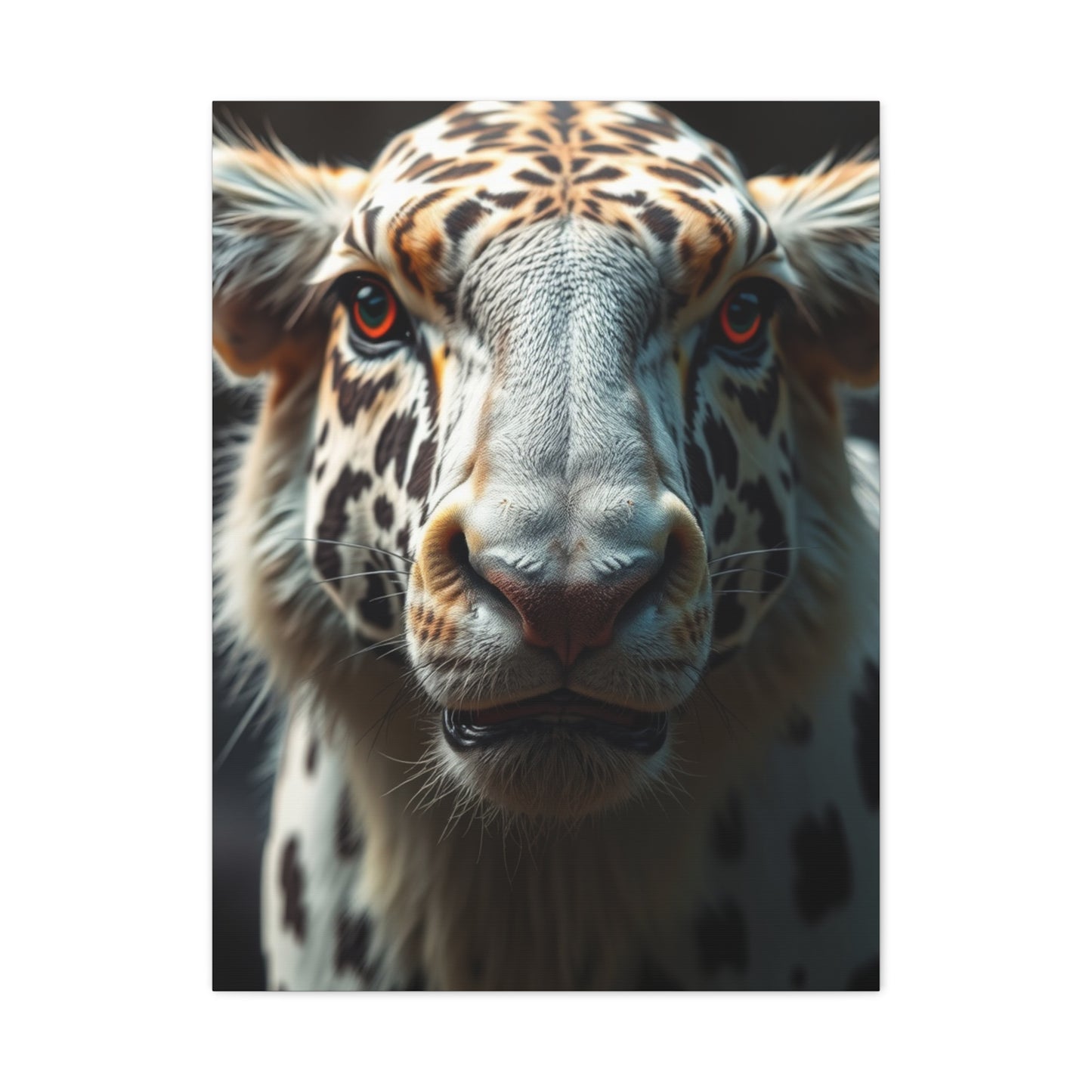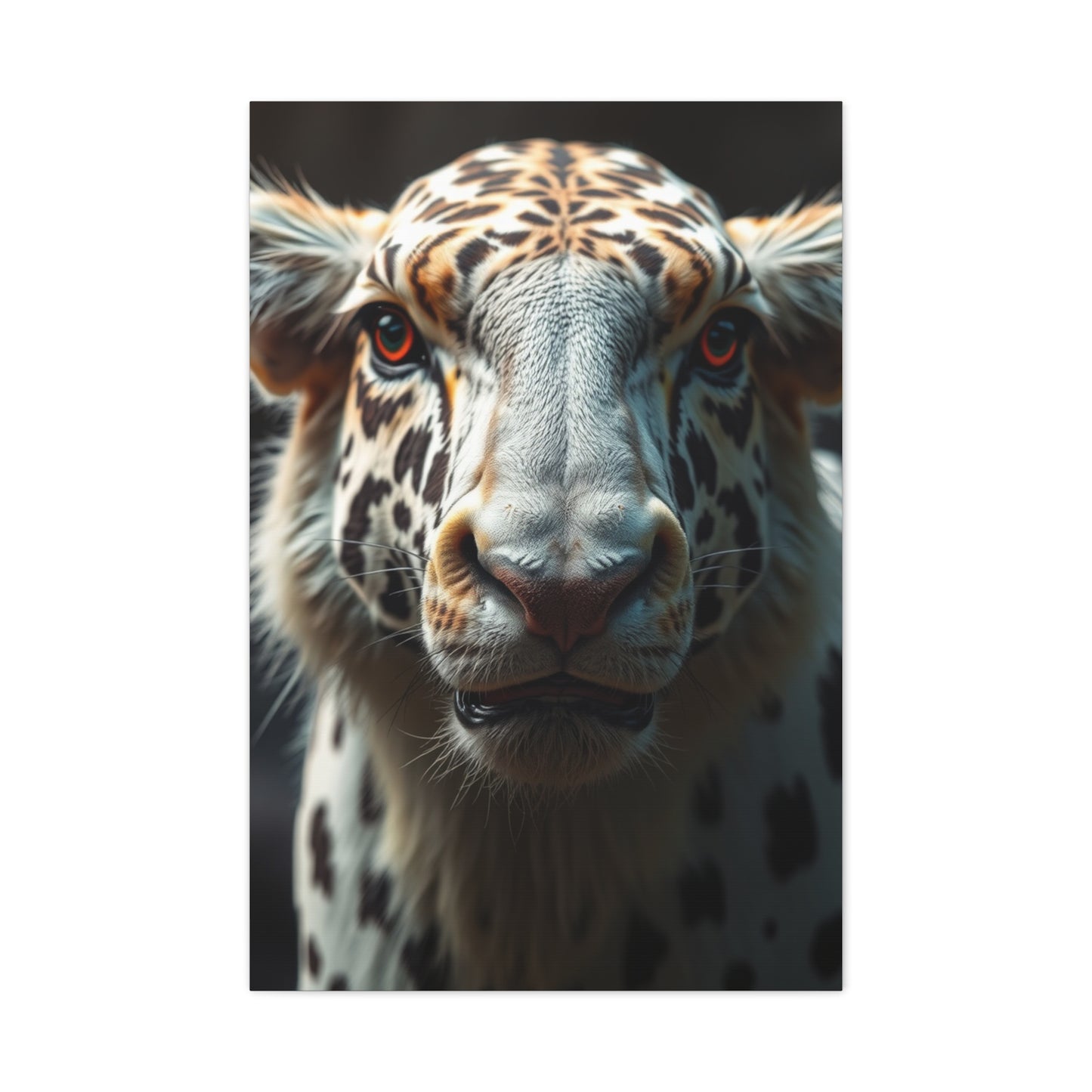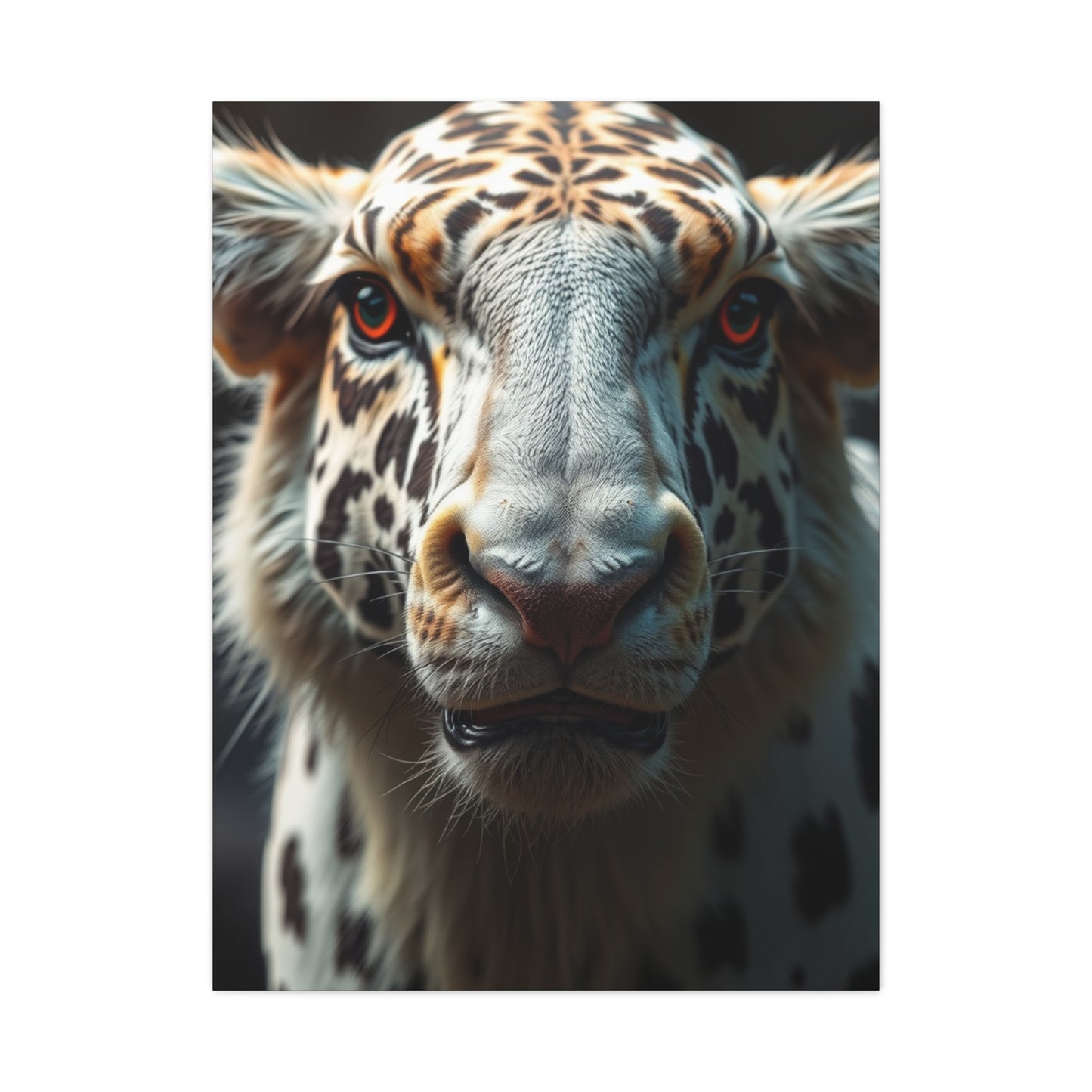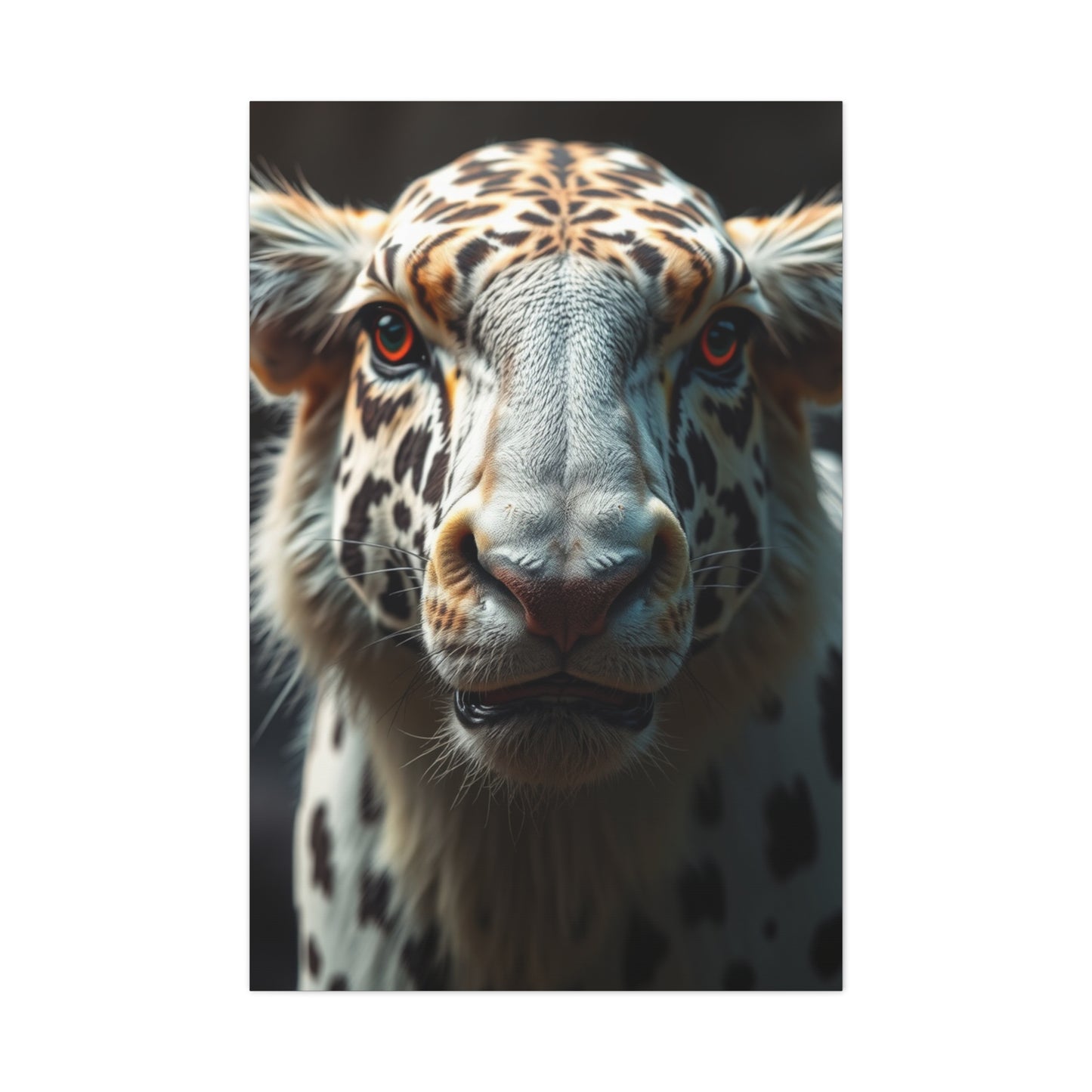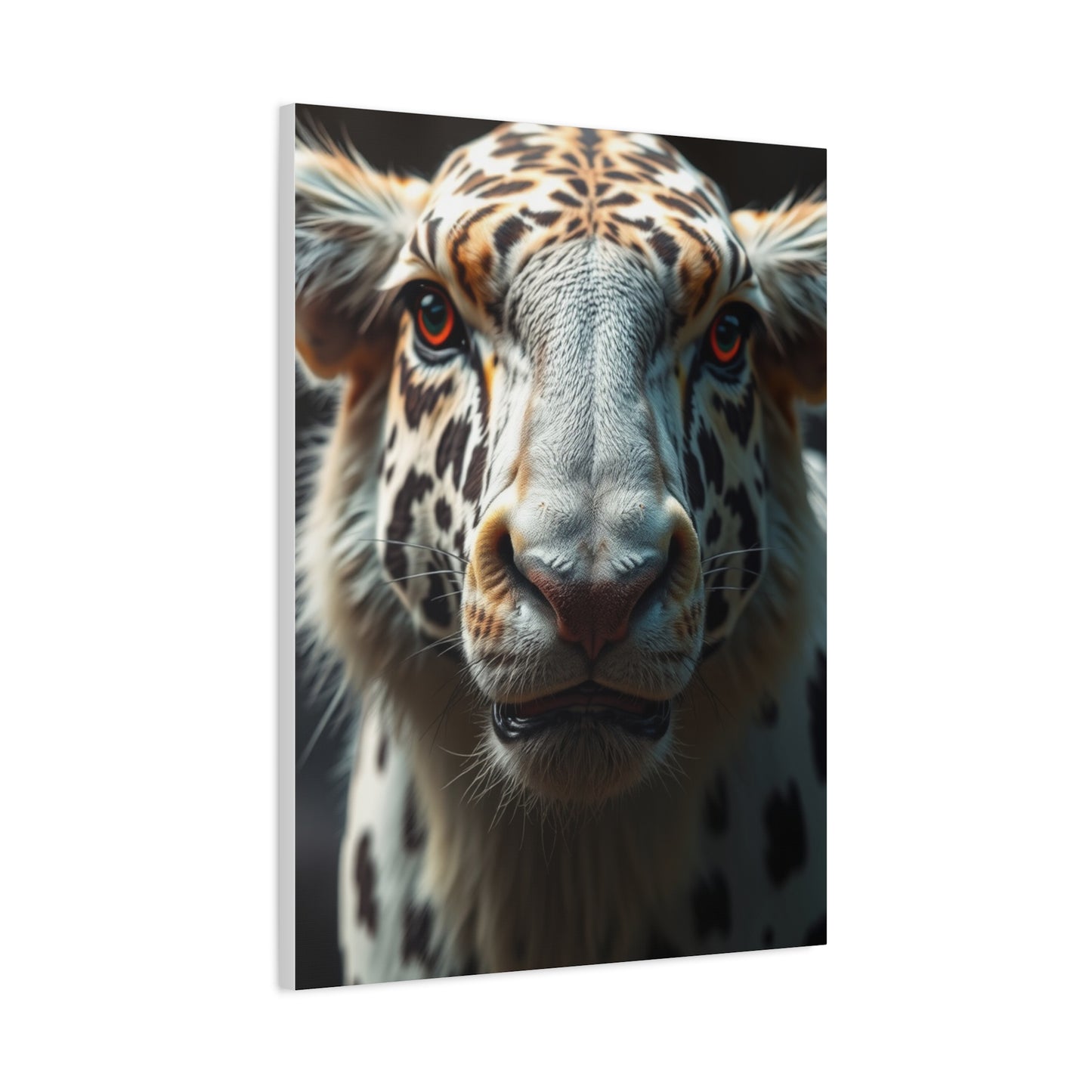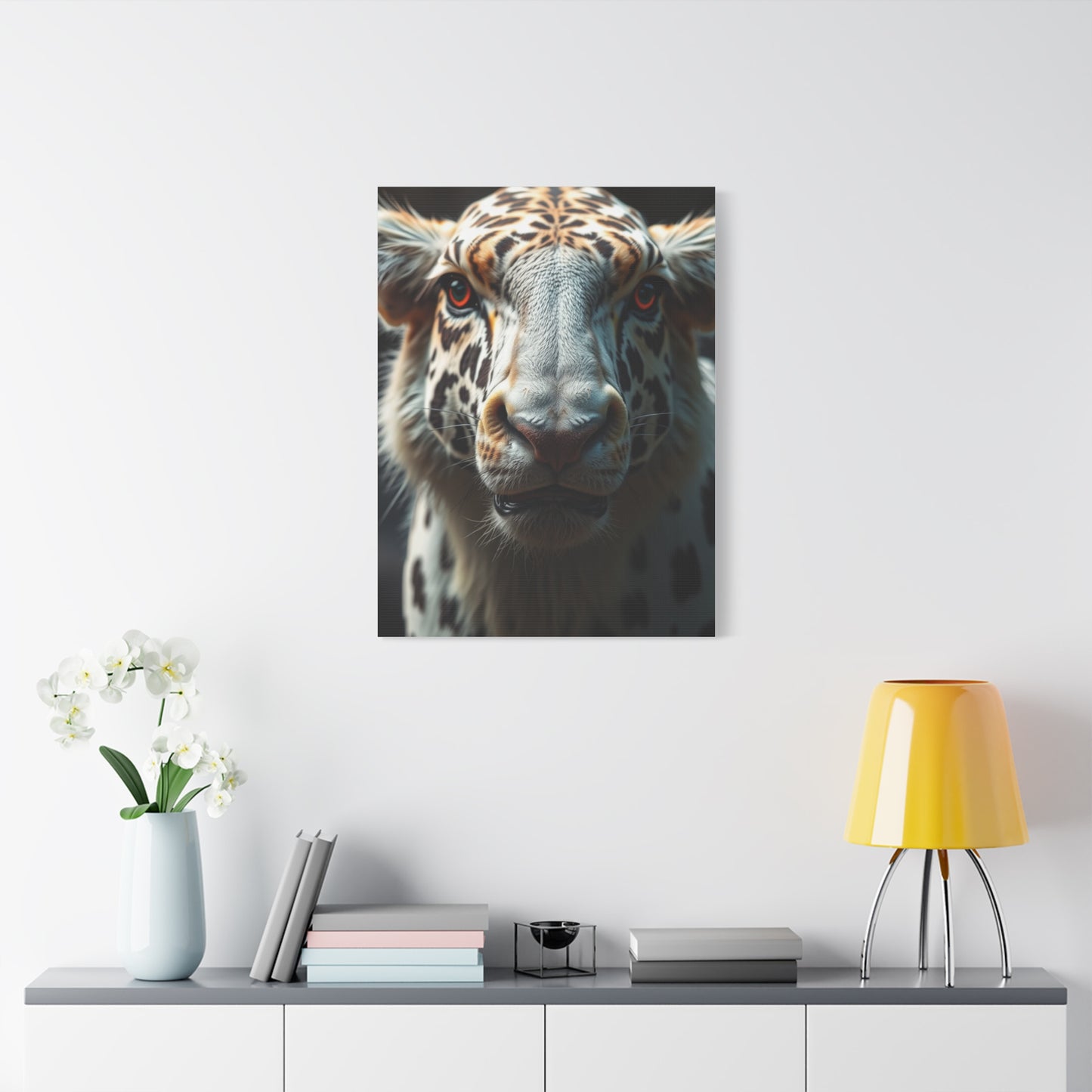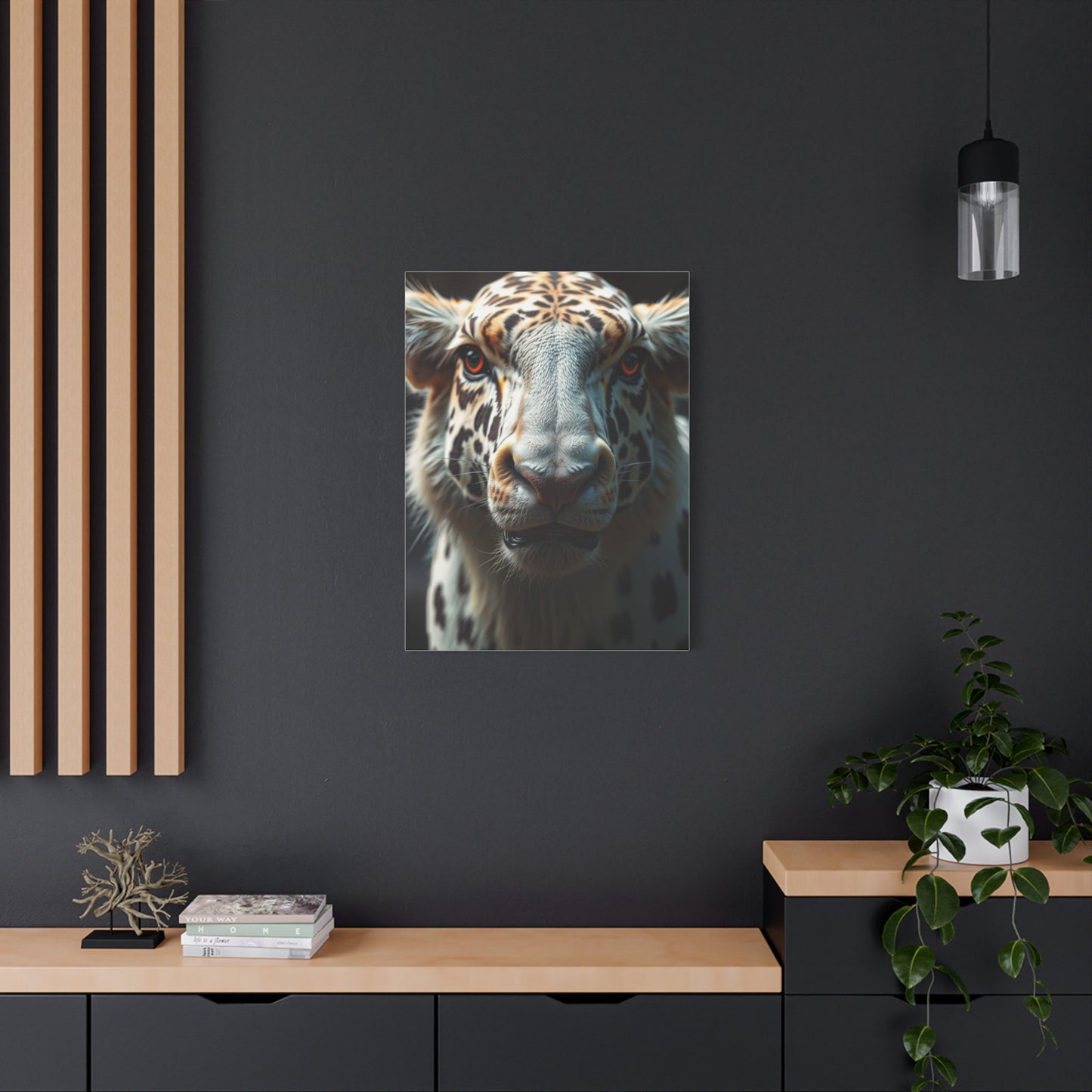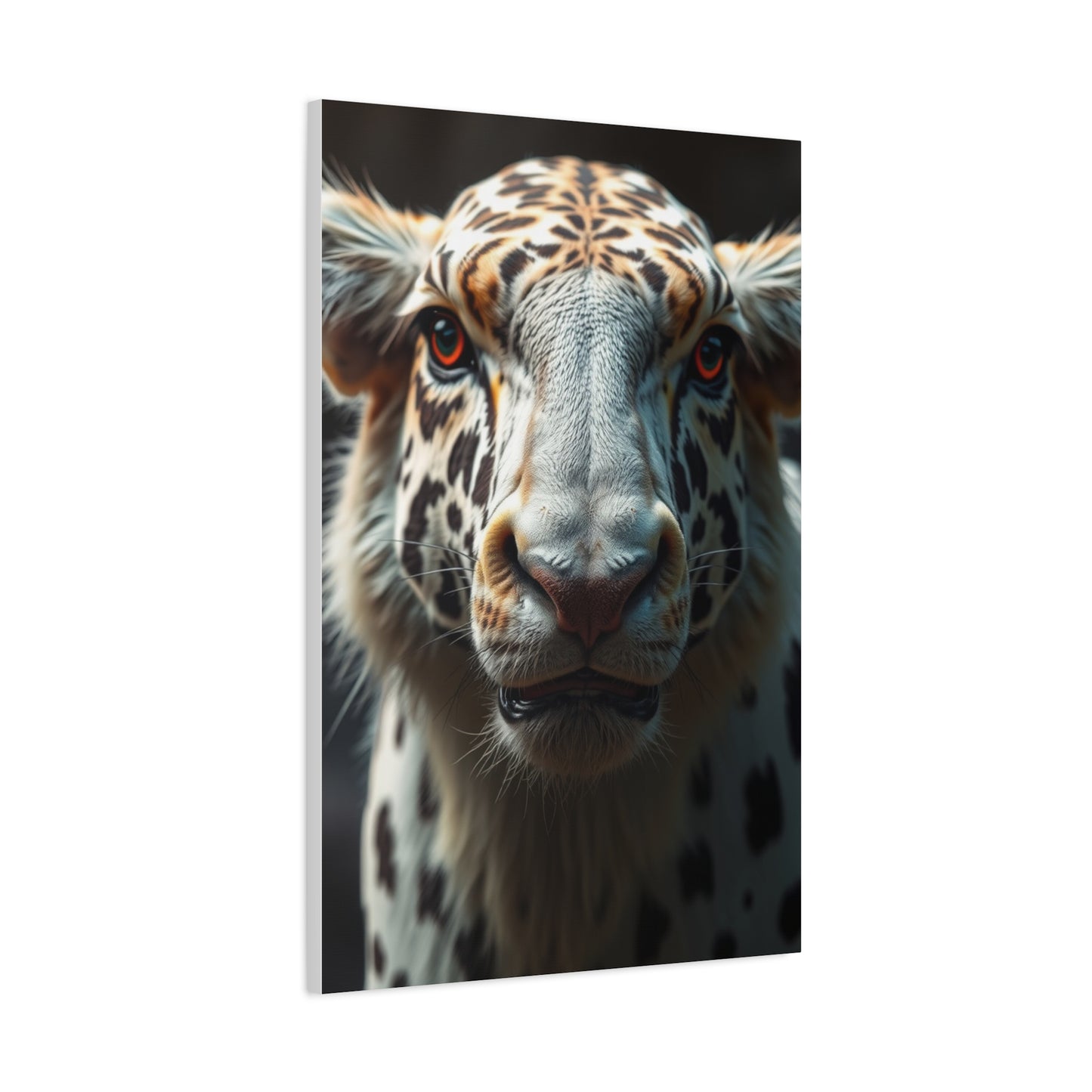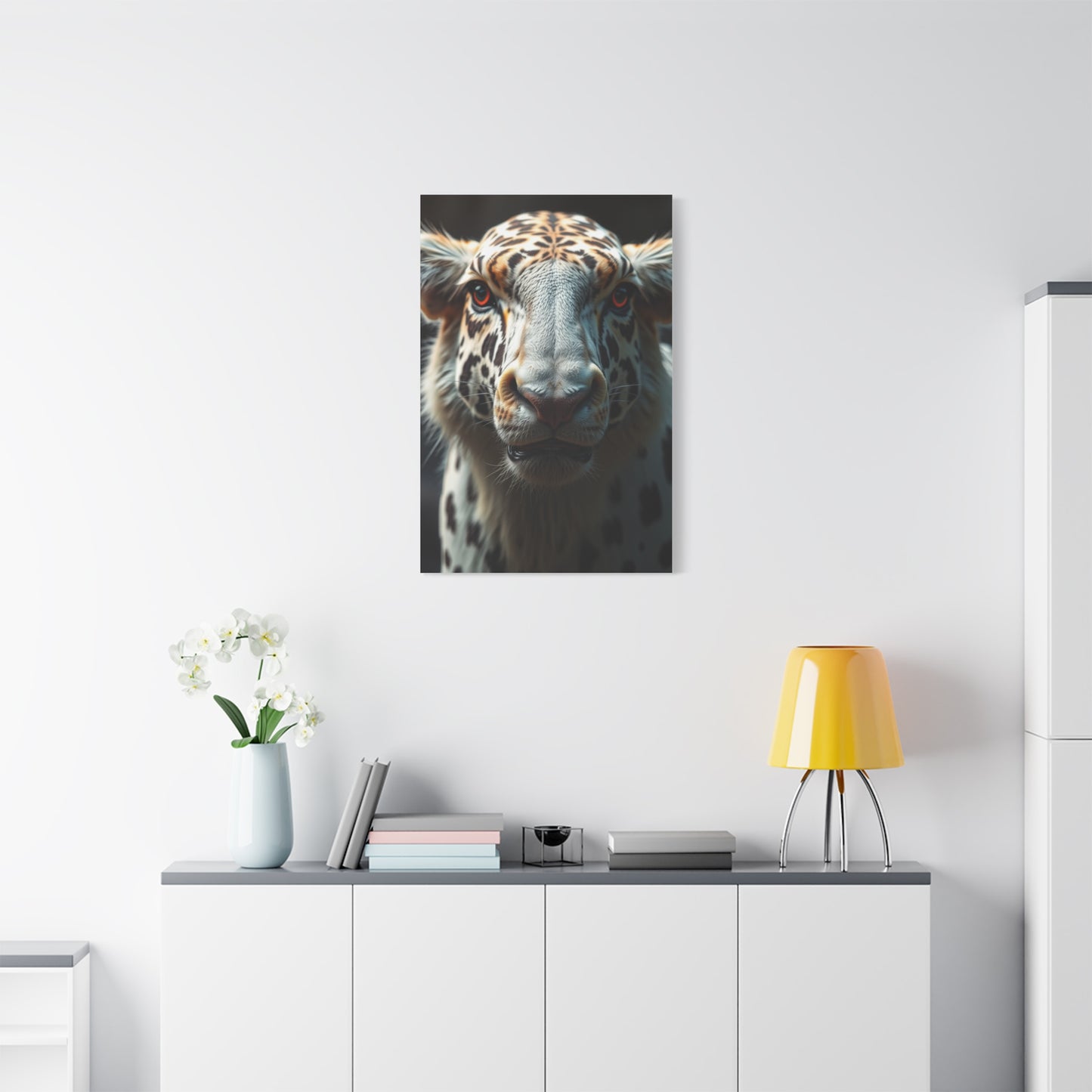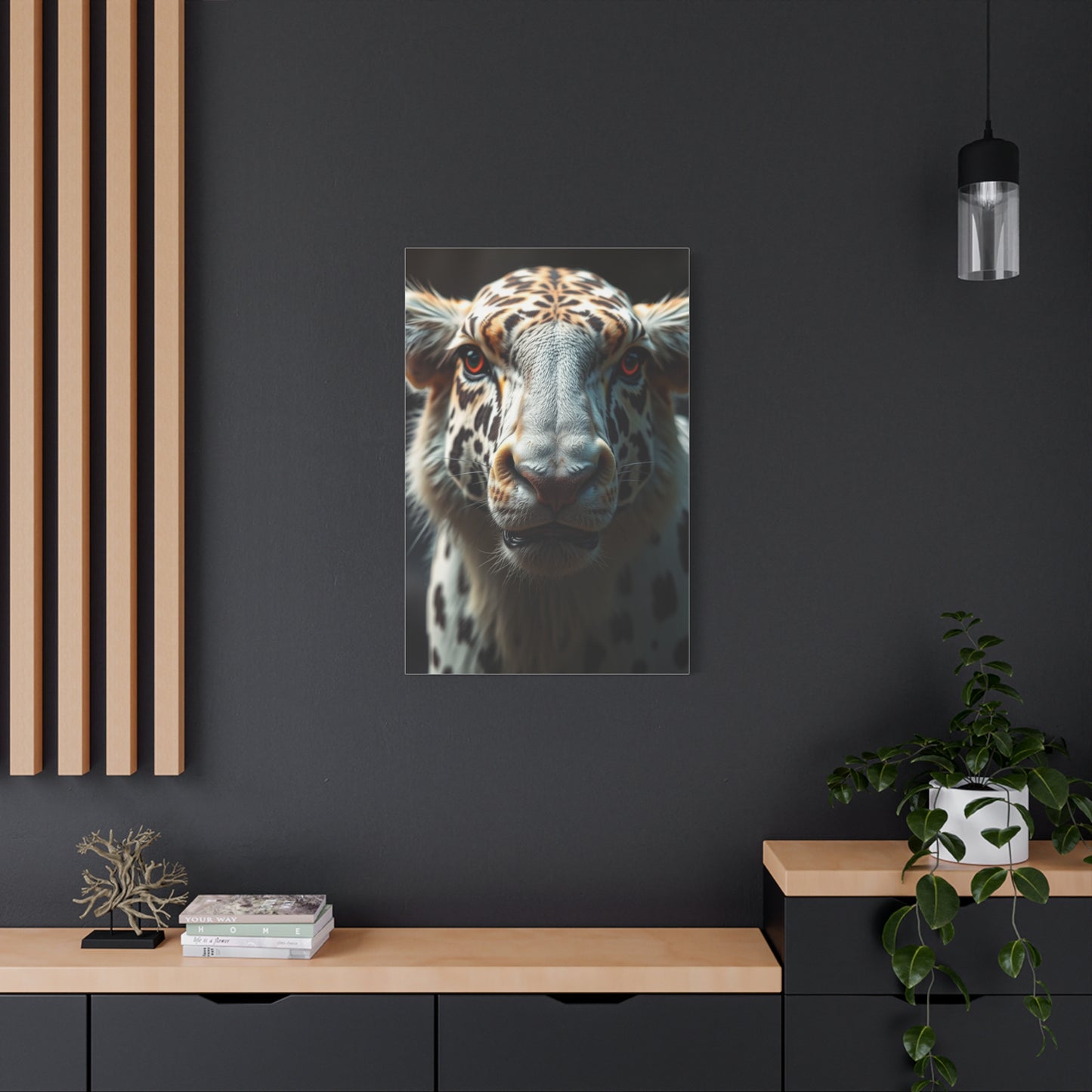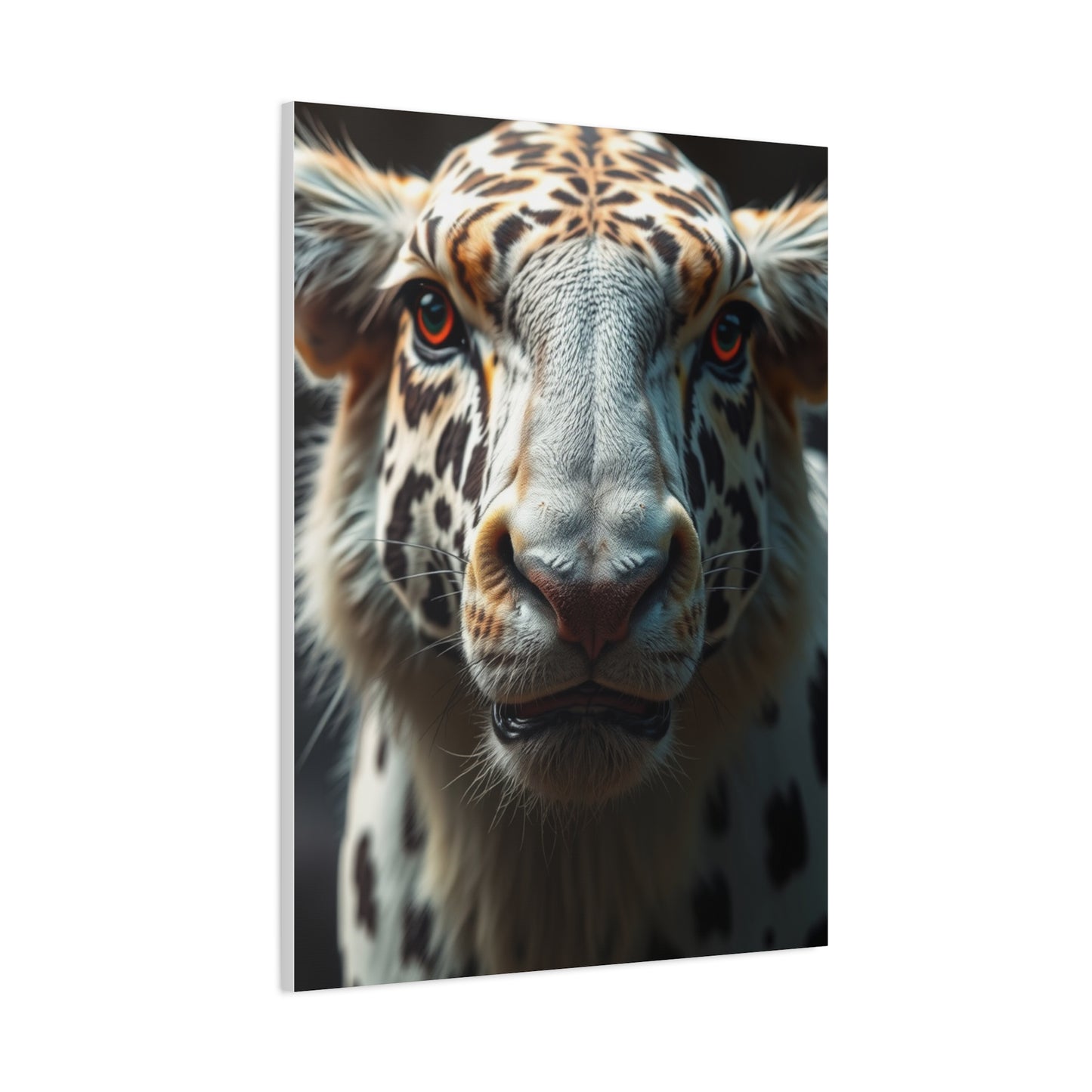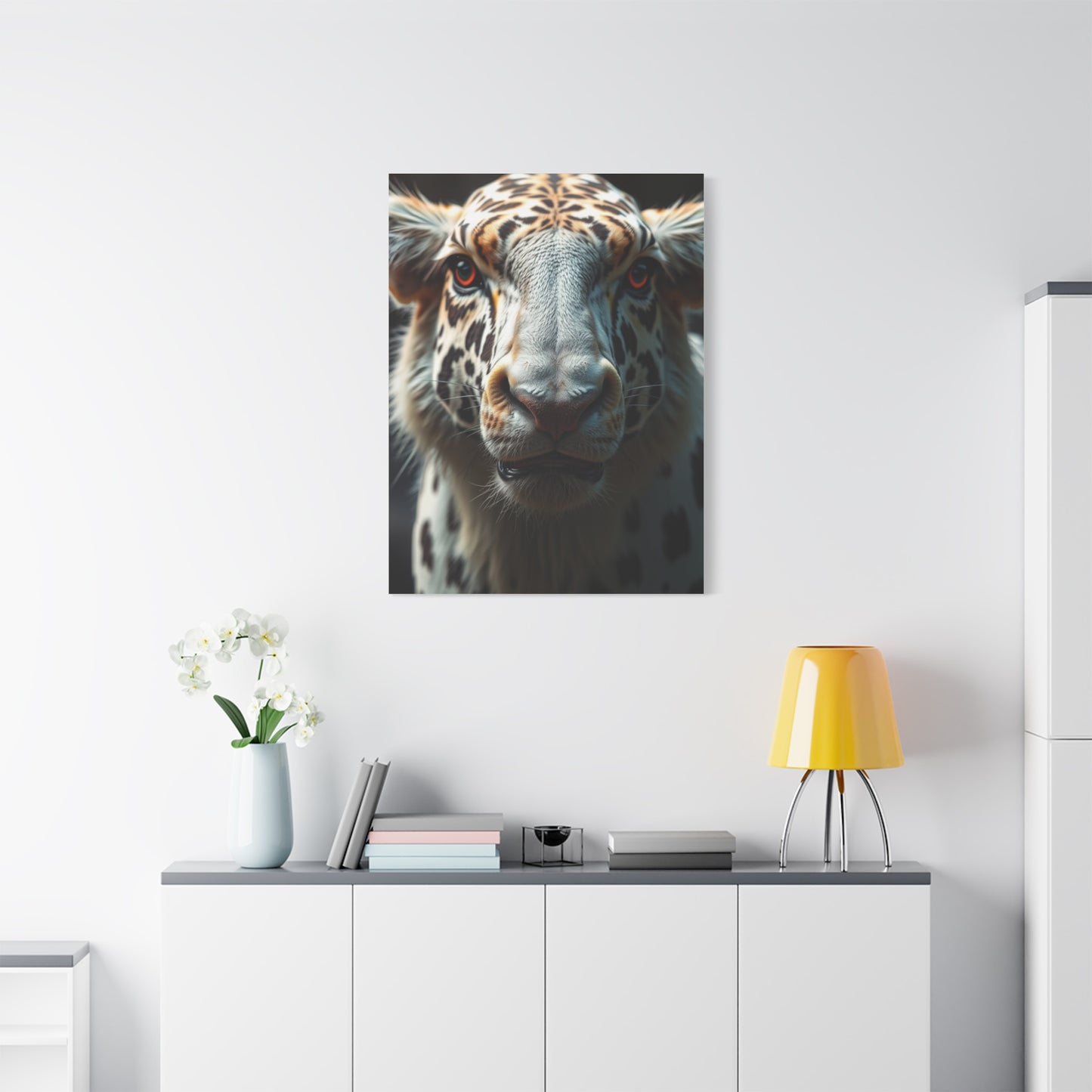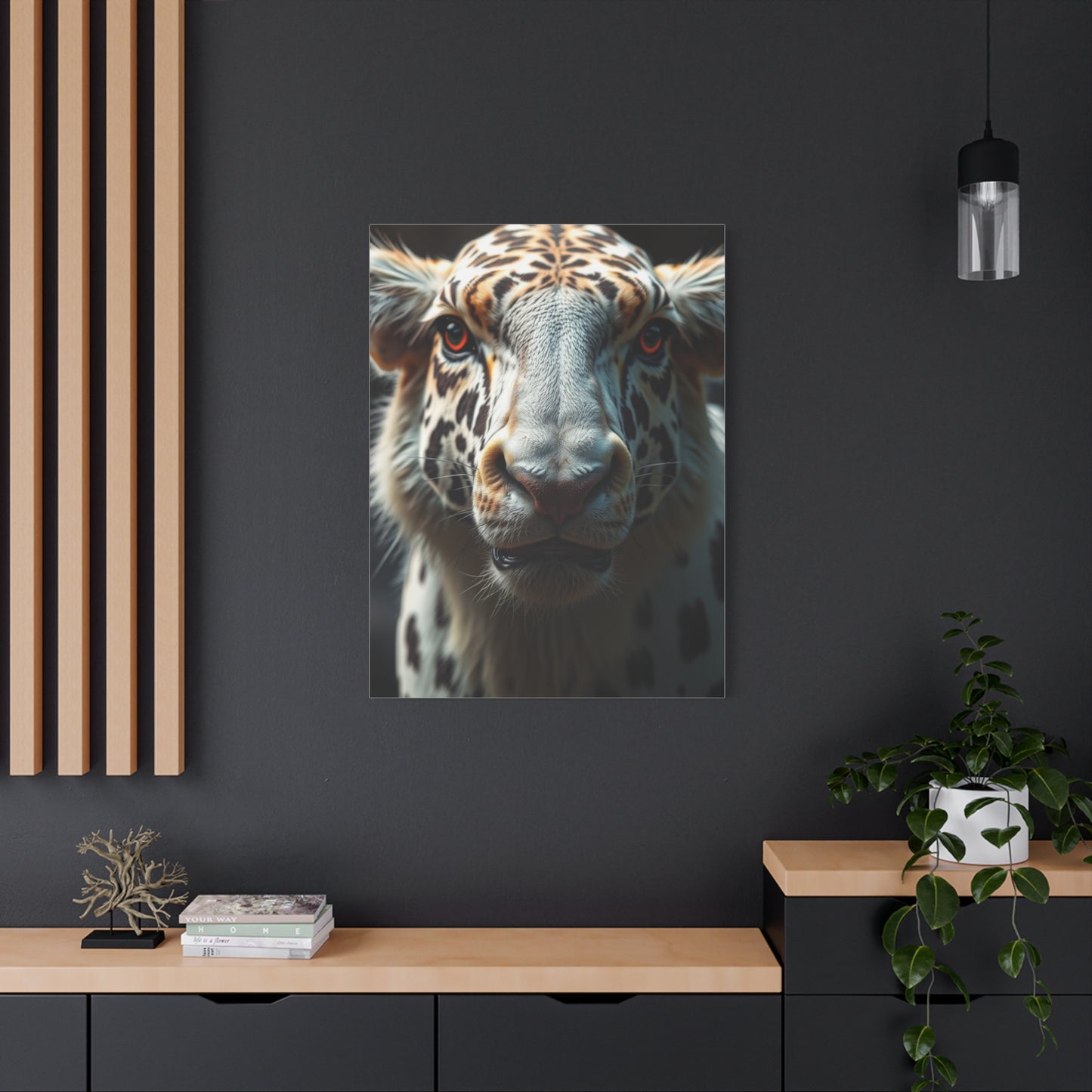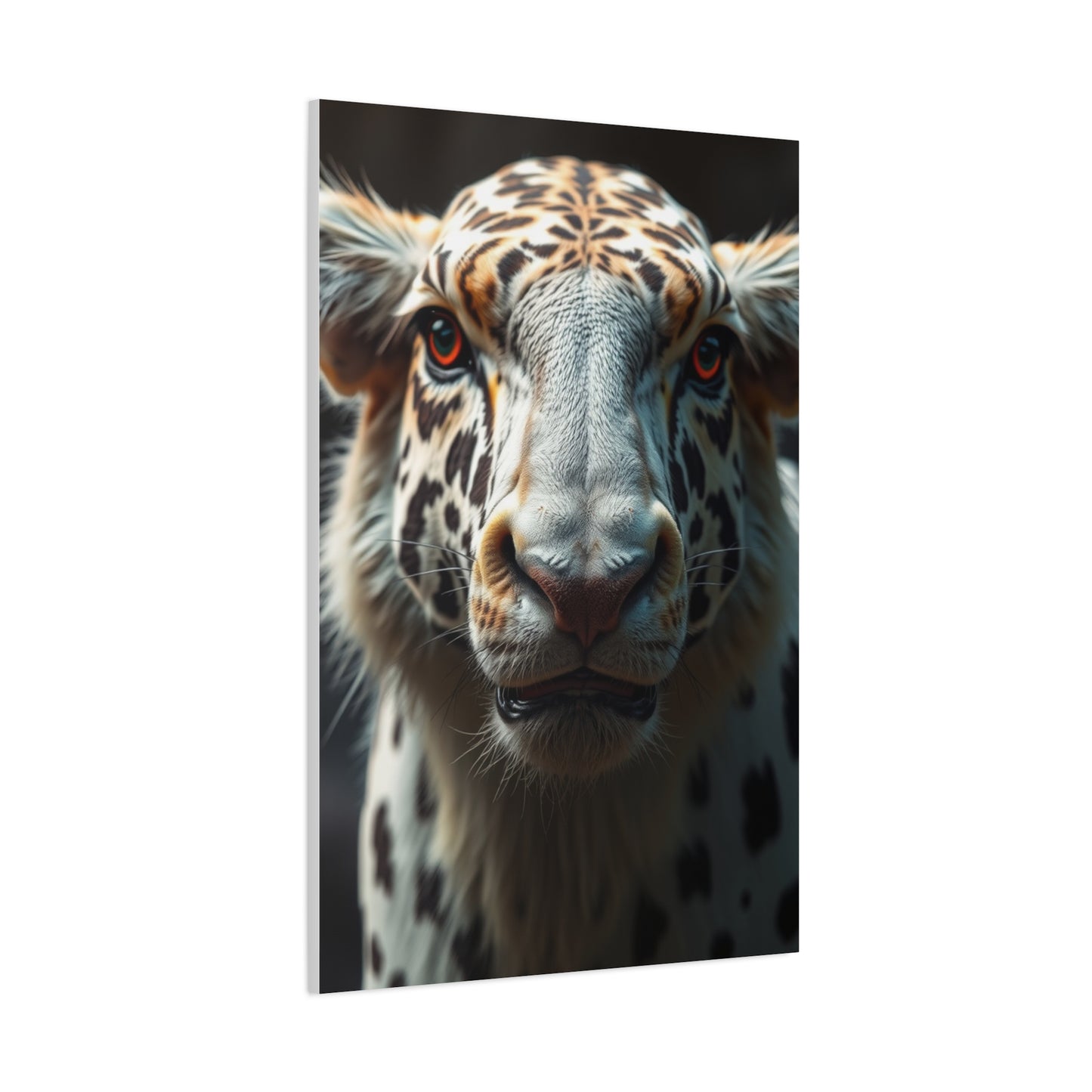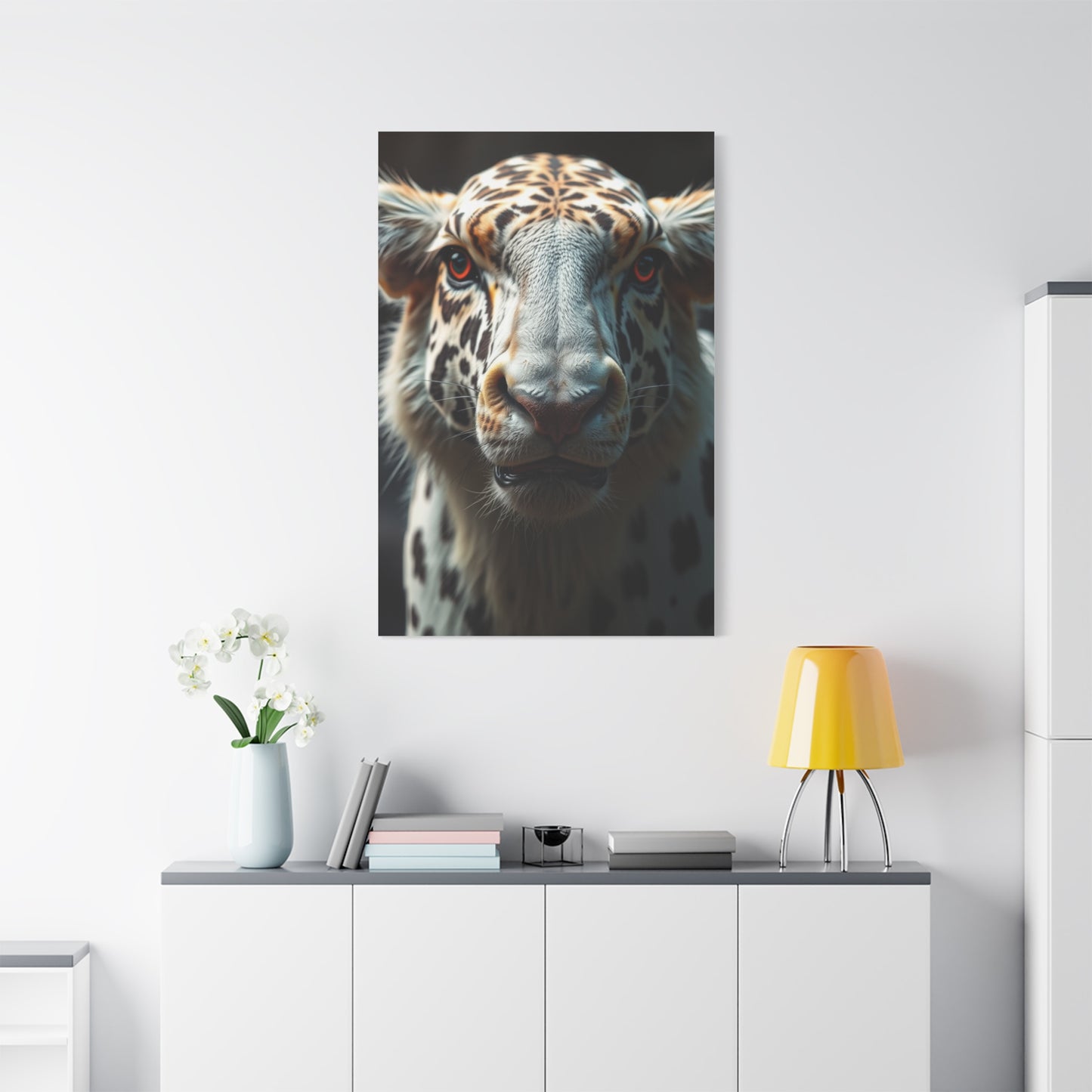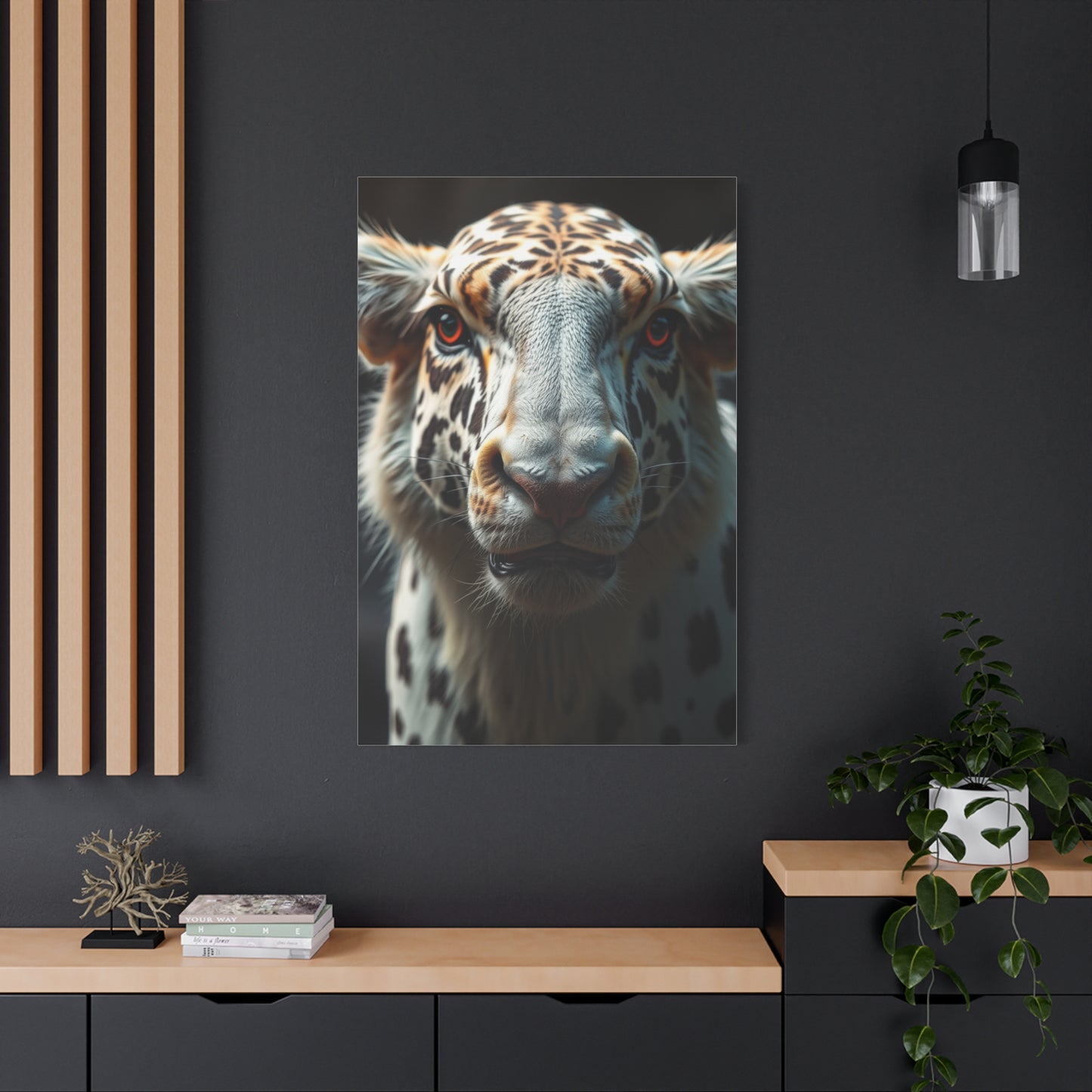The Power and Beauty of Regal Animals Captured in Portraiture Wall Art
The magnificence of wildlife has captivated human imagination for centuries, inspiring artists to create breathtaking representations of nature's most noble creatures. Majestic animal portraits wall art represents more than mere decoration; it embodies a profound connection between the wild kingdom and our living environments. These stunning visual narratives transform ordinary walls into galleries of natural grandeur, where each brushstroke tells a story of power, grace, and untamed beauty.
Contemporary homes increasingly embrace the sophistication that comes with carefully curated animal portraiture. The appeal extends beyond aesthetic pleasure, touching something primal within us that recognizes the inherent nobility found in wildlife. From the piercing gaze of a snow leopard to the commanding presence of an African elephant, these artistic interpretations capture moments of raw authenticity that commercial photography often cannot achieve.
The evolution of animal portraiture has progressed from traditional hunting lodge decorations to sophisticated artistic statements that complement modern architectural sensibilities. Today's collectors appreciate the nuanced approach artists take when depicting wildlife, understanding that these works represent both artistic skill and environmental consciousness. The careful selection of subjects, from endangered species to iconic predators, reflects our changing relationship with the natural world.
Quality canvas reproductions have democratized access to museum-quality wildlife art, allowing homeowners to invest in pieces that carry both emotional resonance and potential financial value. The printing technologies available today ensure that color saturation, texture detail, and tonal depth remain faithful to original artworks, making these pieces suitable for the most discerning collectors.
The Timeless Appeal of Wildlife Portraiture in Contemporary Homes
Wildlife portraiture transcends temporal boundaries, offering a bridge between our urbanized existence and the primal world that continues to exist beyond city limits. The enduring popularity of animal subjects in art reflects humanity's deep-seated fascination with creatures that embody qualities we admire: strength, freedom, resilience, and natural beauty. These characteristics make wildlife portraits particularly compelling choices for residential decoration.
The psychological impact of animal imagery in living environments cannot be understated. Research in environmental psychology suggests that representations of nature, including wildlife art, can reduce stress levels and promote feelings of well-being. The presence of majestic animal portraits creates focal points that draw attention away from daily concerns, offering moments of contemplation and connection with the natural world.
Modern homeowners appreciate the versatility that wildlife portraiture offers in terms of decorative flexibility. Unlike landscape paintings that may dictate specific color schemes or architectural styles, animal portraits can adapt to various design approaches while maintaining their intrinsic power. A minimalist contemporary home can accommodate a striking black and white lion portrait just as effectively as a traditional study might showcase a detailed oil painting of a forest stag.
The collectible nature of wildlife art adds another dimension to its appeal. Many contemporary artists specializing in animal subjects have developed significant followings, with their works appreciating in value over time. This investment potential, combined with personal enjoyment, makes wildlife portraiture an attractive option for both new collectors and seasoned art enthusiasts.
Cultural significance also plays a role in the enduring appeal of animal portraiture. Different cultures have long associated specific animals with particular virtues or spiritual meanings, making these artworks deeply personal choices that reflect individual values and aspirations. The universal language of animal symbolism ensures that these pieces resonate across cultural boundaries.
Canvas Printing Excellence: Bringing Wildlife Art to Life
The technical aspects of canvas reproduction have revolutionized how we experience wildlife art in our homes. Modern printing techniques utilize archival-quality inks and premium canvas materials to create reproductions that rival original paintings in visual impact and longevity. The texture of canvas adds depth and authenticity to wildlife portraits, creating an tactile experience that enhances the emotional connection between viewer and artwork.
High-resolution scanning and color-matching technologies ensure that every nuance of the original artwork translates effectively to the reproduction medium. This attention to detail becomes particularly important when dealing with wildlife subjects, where the subtle gradations in fur texture, the depth of an animal's eyes, or the intricate patterns of feathers can make the difference between a compelling portrait and a mediocre reproduction.
The selection of canvas materials significantly impacts the final appearance and durability of wildlife prints. Museum-quality cotton canvases provide superior color retention and resist fading over time, ensuring that the investment in wildlife art remains visually striking for decades. The weight and texture of the canvas also contribute to the perceived value and authenticity of the finished piece.
Professional stretching and mounting techniques complete the transformation from digital file to gallery-worthy artwork. The tension applied to the canvas affects how light interacts with the surface, influencing the perceived depth and dimensionality of the wildlife portrait. Proper mounting also prevents warping and ensures that the artwork maintains its intended proportions over time.
Quality control measures in the production process guarantee consistent results across multiple prints. Color calibration, print head maintenance, and environmental controls during the printing process all contribute to the reliability of the final product. These technical considerations ensure that customers receive wildlife art that meets their expectations and justifies their investment.
Majestic Predators: Lions, Tigers, and Big Cats in Art
The regal bearing of big cats has made them perpetual favorites among wildlife artists and collectors alike. Lions, with their impressive manes and dignified expressions, embody leadership and courage in ways that translate powerfully to canvas. The artistic challenge of capturing the texture of a lion's mane, the intensity of golden eyes, and the subtle play of light across powerful muscles provides opportunities for artists to demonstrate technical mastery while creating emotionally compelling works.
Tigers present a different but equally captivating artistic subject. The intricate patterns of their striped coats offer opportunities for detailed work that showcases both the artist's skill and the animal's natural beauty. The contrast between the tiger's fierce predatory nature and moments of quiet contemplation provides rich material for artistic interpretation. Whether depicted in action or repose, tigers bring an element of exotic mystery to any living environment.
Leopards and jaguars, with their spotted coats and compact, muscular builds, offer artists opportunities to explore pattern and texture in unique ways. The rosette patterns that mark these cats create natural compositional elements that skilled artists can use to guide the viewer's eye through the artwork. The varied habitats these cats occupy, from African savannas to South American rainforests, provide diverse backgrounds that can complement different decorative schemes.
The symbolism associated with big cats extends across cultures, making these subjects universally appealing. In many traditions, lions represent nobility and bravery, tigers embody power and passion, and leopards symbolize cunning and adaptability. These associations add layers of meaning to wildlife portraits that extend beyond mere aesthetic appreciation.
Contemporary artists working with big cat subjects often focus on conservation themes, using their artwork to raise awareness about endangered species. This environmental consciousness adds ethical dimensions to the aesthetic pleasure of owning big cat artwork, allowing collectors to feel that their purchases support broader conservation efforts.
Magnificent Elephants: Gentle Giants in Artistic Focus
Elephants possess a unique combination of physical grandeur and emotional depth that makes them exceptional subjects for wildlife portraiture. Their intelligent eyes, expressive ears, and intricate skin textures provide artists with rich material for creating compelling visual narratives. The challenge of accurately depicting an elephant's massive scale while maintaining artistic composition requires considerable skill and understanding of both anatomy and artistic principles.
The emotional intelligence that elephants demonstrate in their natural habitats translates remarkably well to artistic interpretation. Artists often focus on the gentle interactions between family members, the wisdom apparent in matriarchal figures, or the playful nature of young elephants. These behavioral elements add narrative depth to elephant portraits that purely aesthetic subjects might lack.
The textural opportunities presented by elephant subjects are particularly appealing to artists working in various media. The rough, weathered skin of mature elephants contrasts beautifully with the softer textures of younger animals. The play of light and shadow across these varied surfaces creates opportunities for dramatic artistic effects that enhance the visual impact of the finished artwork.
Cultural and spiritual significance associated with elephants varies across different societies, but themes of wisdom, memory, and family bonds appear consistently. In many Asian cultures, elephants represent good fortune and removal of obstacles, making elephant artwork particularly meaningful for homeowners seeking positive symbolic elements in their decorative choices.
The conservation status of elephants adds poignancy to artistic representations of these magnificent creatures. Many contemporary artists use their elephant portraits to highlight the threats facing wild populations, creating artwork that serves both aesthetic and educational purposes. This dual function appeals to collectors who appreciate art that carries meaningful messages beyond visual beauty.
Graceful Equines: Horses in Motion and Stillness
The artistic tradition of equine portraiture spans centuries, with horses serving as subjects for some of history's most celebrated artworks. The natural grace and athletic ability of horses provide artists with dynamic subjects that can convey movement, power, and elegance simultaneously. Whether captured in full gallop or quiet contemplation, horses offer unlimited possibilities for artistic interpretation.
The anatomical complexity of horses presents both challenges and opportunities for wildlife artists. The interplay of muscle groups beneath the coat, the flowing lines of mane and tail, and the expressive nature of equine features require careful study and skilled execution. Artists who master these elements can create horse portraits that capture not just physical accuracy but also the spirit and personality of their subjects.
Different horse breeds offer varied artistic possibilities, from the refined elegance of Arabian horses to the powerful build of draft breeds. Each type brings distinct characteristics that can appeal to different aesthetic preferences and decorative needs. The diversity within equine subjects ensures that horse enthusiasts can find artwork that reflects their particular interests and experiences.
The relationship between humans and horses throughout history adds emotional depth to equine artwork. Many viewers bring personal experiences with horses to their appreciation of equine art, whether from riding experiences, racing interests, or simply admiration for these noble animals. This personal connection enhances the emotional impact of horse portraits in residential settings.
Contemporary equine artists often explore themes beyond traditional portraits, incorporating elements of freedom, wildness, and the tension between domestication and natural instincts. These thematic explorations create artwork that appeals to broader audiences while maintaining the classic appeal of horse subjects.
Exotic Birds: Feathered Majesty on Canvas
The incredible diversity of bird species provides wildlife artists with an almost limitless palette of colors, patterns, and forms to explore. From the brilliant plumage of tropical parrots to the majestic presence of raptors, birds offer opportunities for creating artwork that can complement virtually any decorative scheme while adding elements of natural beauty and wonder.
The technical challenges of accurately depicting feather structures, iridescent colors, and the delicate anatomy of birds require considerable artistic skill. The way light interacts with different types of feathers, from the soft down of an owl to the metallic sheen of a hummingbird, provides opportunities for artists to demonstrate mastery of light, color, and texture.
Exotic birds from tropical regions offer particularly striking subjects for wildlife portraiture. The vibrant colors found in species like macaws, toucans, and birds of paradise can create focal points that energize entire rooms. The artistic challenge lies in capturing these brilliant colors without creating artwork that overwhelms its surroundings.
Birds of prey present different artistic opportunities, with their fierce expressions and powerful builds conveying strength and determination. Eagles, hawks, and owls have long served as symbols of power, wisdom, and freedom, making them particularly appealing subjects for collectors seeking artwork with symbolic significance.
The behavioral characteristics of different bird species can inform artistic interpretation, with some artists focusing on the social nature of flocking birds while others emphasize the solitary majesty of individual specimens. These behavioral elements add narrative depth to bird portraits that purely decorative approaches might lack.
Noble Deer and Forest Creatures
Forest wildlife, particularly deer species, represents a more subtle approach to animal portraiture that appeals to collectors preferring understated elegance over dramatic power. The graceful lines of deer, from the delicate features of does to the impressive antler spreads of mature bucks, provide artists with subjects that embody natural beauty without overwhelming intensity.
The seasonal changes that affect forest animals offer artists opportunities to explore different moods and atmospheric effects. A deer portrait set against autumn foliage conveys different emotions than the same subject depicted in a snowy winter landscape. These seasonal variations allow collectors to choose artwork that complements their regional climate or personal preferences.
The symbolism associated with deer varies across cultures but often includes themes of gentleness, sensitivity, and connection with natural cycles. These associations make deer artwork particularly appropriate for homes where tranquility and harmony are valued over dramatic impact.
Other forest creatures, including elk, moose, and various smaller mammals, each bring unique characteristics to wildlife portraiture. The massive antlers of bull elk create natural compositional elements that skilled artists can use to create visually striking arrangements. The somewhat comical appearance of moose can add elements of whimsy to wildlife collections while maintaining artistic integrity.
The habitat requirements of forest animals often dictate background elements in their portraits, providing opportunities for artists to explore landscape painting techniques within wildlife subjects. The interplay between animal subjects and their natural environments creates more complex artistic compositions that can serve multiple decorative functions.
Arctic and Polar Wildlife Artistry
The harsh beauty of polar regions and their wildlife inhabitants provides artists with subjects that embody survival, adaptation, and pristine natural power. Polar bears, with their massive builds and arctic environment, represent the ultimate synthesis of beauty and strength. The artistic challenge of depicting white fur against snowy backgrounds requires sophisticated understanding of value relationships and subtle color variations.
Arctic foxes in their winter coats present different technical challenges, with their delicate features and fluffy fur requiring precise brushwork and color handling. The seasonal coat changes these animals undergo provide opportunities for artists to explore themes of adaptation and survival in their work.
Penguins, though technically not arctic animals, represent polar wildlife in popular imagination and provide opportunities for creating artwork with both visual appeal and subtle humor. The formal appearance of penguins in their black and white plumage can create sophisticated portrait studies that work well in contemporary settings.
Seals and walruses offer artists opportunities to explore the intersection between aquatic and terrestrial lifestyles. The sleek forms of seals contrast interestingly with the bulkier builds of walruses, providing varied compositional possibilities within polar wildlife themes.
The environmental messages inherent in polar wildlife art add contemporary relevance to these traditional subjects. Climate change concerns make polar wildlife portraits particularly poignant, creating artwork that serves both aesthetic and educational purposes for environmentally conscious collectors.
Marine Life: Underwater Majesty Captured
The mysterious world beneath ocean surfaces provides wildlife artists with subjects that seem almost alien in their beauty and adaptations. Whales, the largest creatures on Earth, present unique challenges in terms of scale and proportion when translated to traditional canvas formats. Artists must find ways to convey the immense size of these creatures while maintaining effective composition within standard artwork dimensions.
Dolphins and porpoises offer opportunities for exploring themes of intelligence, playfulness, and social behavior in marine environments. The sleek forms and expressive features of these marine mammals create subjects that appeal to broad audiences while providing technical challenges that showcase artistic skill.
Sharks, despite their fearsome reputation, possess a streamlined beauty that translates well to artistic interpretation. The contrast between their predatory nature and graceful movement through water creates compelling artistic tensions that can result in powerful portrait studies.
Sea turtles represent ancient wisdom and environmental perseverance, making them particularly meaningful subjects for conservation-minded collectors. The intricate patterns on their shells and the wise expressions in their eyes provide rich material for detailed portrait work.
Colorful reef fish and other tropical marine life offer opportunities for creating vibrant, decorative artwork that can brighten any living environment. The incredible diversity of forms, colors, and patterns found in marine ecosystems ensures that artists working with these subjects never lack for inspiration.
African Safari Wildlife: Icons of the Savanna
The African savanna has captured human imagination for generations, with its dramatic landscapes and iconic wildlife providing endless inspiration for artists. The Big Five game animals each present unique artistic opportunities and challenges, from the massive presence of elephants to the spotted patterns of leopards.
Giraffes, with their impossible proportions and gentle expressions, create opportunities for artists to explore vertical compositions and unusual spatial relationships. The intricate patterns of giraffe coats provide natural decorative elements that skilled artists can incorporate into compelling portrait designs.
Rhinoceros species, both African and Asian, embody prehistoric power and contemporary conservation concerns. The armored appearance of rhino skin and the impressive horns create subjects that convey strength and endurance while highlighting the precarious status of these magnificent creatures.
Hippos, despite their seemingly docile appearance, represent hidden power and territorial aggression that can translate into compelling artistic statements. The contrast between their bulk and surprising grace in water provides opportunities for artists to explore themes of hidden depths and unexpected capabilities.
Zebras offer unique pattern challenges for wildlife artists, with their stripe patterns creating natural compositional elements while requiring precise execution to maintain visual coherence. The social nature of zebra herds provides opportunities for creating more complex multi-figure compositions.
Mountain Wildlife: Creatures of High Altitudes
Mountain environments produce wildlife species adapted to extreme conditions, making them compelling subjects for artists interested in themes of endurance and adaptation. Mountain goats and sheep, with their sure-footed navigation of treacherous terrain, embody determination and survival skills that translate well to artistic interpretation.
Bears inhabiting mountain regions, including grizzlies and black bears, present opportunities for exploring the intersection between power and vulnerability. The seasonal behaviors of mountain bears, from spring emergence to autumn preparation for hibernation, provide varied narrative possibilities for artistic interpretation.
Mountain lions and other alpine predators embody stealth and hunting prowess that can create dramatically compelling artwork. The rocky, rugged backgrounds associated with these animals provide opportunities for artists to explore landscape elements within wildlife portraits.
Birds of prey that inhabit mountain regions, including various eagle and hawk species, represent freedom and mastery of harsh environments. The dramatic flight capabilities of these birds can inspire dynamic compositions that convey movement and power.
The changing seasons in mountain environments affect wildlife behavior and appearance in ways that provide artists with varied interpretive possibilities. Snow conditions, vegetation changes, and weather patterns all influence how mountain wildlife appears and behaves, offering rich material for artistic exploration.
Domestic Animals: Beloved Companions in Art
While wild animal portraits often focus on power and untamed beauty, domestic animal art explores themes of companionship, loyalty, and the special bonds between humans and their animal companions. Dogs, in their incredible breed diversity, provide artists with subjects ranging from the massive dignity of Great Danes to the playful charm of small terriers.
Cats, both domestic and feral, offer opportunities for exploring independence, mystery, and graceful movement. The variety of domestic cat breeds and colors ensures that feline portraits can complement virtually any decorative scheme while maintaining the essential character that makes cats appealing subjects.
Horses, as mentioned earlier, represent a bridge between domestic and wild subjects. Their roles in human history and culture add layers of meaning to equine portraits that extend beyond purely aesthetic considerations.
Farm animals, including cattle, sheep, and pigs, might seem mundane but can create surprisingly compelling artwork when approached with appropriate artistic vision. These subjects offer opportunities for exploring rural themes and agricultural heritage in contemporary settings.
The emotional connections people form with domestic animals add personal significance to domestic animal portraits that wild animal artwork might not possess. Pet portraits, in particular, serve memorial and celebratory functions that extend beyond decorative purposes.
Choosing the Perfect Animal Portrait for Your Home
Selecting animal artwork for residential display requires consideration of multiple factors beyond simple aesthetic preference. The scale of the intended display area affects which subjects and compositions will work most effectively. Large, dramatic subjects like elephants or lions require sufficient wall dimensions to avoid overwhelming smaller rooms.
Color relationships between existing decorative elements and potential animal portraits determine how well new artwork will integrate with established design schemes. Natural earth tones found in many wildlife portraits tend to complement a wide range of decorative approaches, while more exotic subjects with brilliant colors require careful consideration of color harmony.
The emotional impact of different animal subjects varies significantly, with some creatures conveying tranquility while others project power or energy. The intended function of the room where artwork will be displayed should influence subject selection, with calming subjects more appropriate for bedrooms and dramatic pieces better suited for living areas or studies.
Personal connections with particular animals, whether through direct experience or cultural associations, can make certain subjects more meaningful than others. These personal preferences often override purely aesthetic considerations and can result in more satisfying long-term relationships with artwork.
The symbolic meanings associated with different animals across various cultures can add depth to decorative choices. Understanding these associations can help in selecting artwork that reinforces desired themes or values within the home environment.
Artistic Styles and Techniques in Wildlife Portraiture
Wildlife artists employ various stylistic approaches to capture animal subjects, from photorealistic precision to impressionistic interpretations that emphasize mood over detail. Hyperrealistic techniques showcase technical mastery and create almost photographic accuracy, but may sacrifice some artistic interpretation for documentary precision.
Impressionistic approaches to wildlife art emphasize emotional response and atmospheric effects over precise anatomical accuracy. These styles can create more evocative artwork that suggests the essence of animal subjects without becoming constrained by literal representation.
Abstract interpretations of animal forms push beyond traditional portraiture into more experimental territories, using animal subjects as starting points for explorations of form, color, and composition. These approaches appeal to collectors interested in contemporary art movements while maintaining connections to wildlife themes.
Traditional oil painting techniques remain popular for wildlife subjects, with their ability to build up rich color layers and create subtle textural effects. The slow-drying nature of oils allows artists time to develop complex color relationships and sophisticated modeling of animal forms.
Watercolor techniques offer different possibilities for wildlife portraiture, with their transparency and fluidity creating opportunities for atmospheric effects and subtle color blending. The unpredictable nature of watercolor can add spontaneity to animal portraits that more controlled media might lack.
Framing and Display Considerations
The presentation of animal artwork significantly affects its visual impact and integration with surrounding decorative elements. Traditional gilded frames can enhance the classical appeal of formal animal portraits but might overwhelm more contemporary interpretations. Simple, clean frame styles often allow wildlife subjects to speak for themselves without competing decorative elements.
Matting choices affect how animal portraits relate to their frames and surrounding wall areas. Neutral mats typically work well with wildlife subjects, allowing natural colors to predominate without clashing with mat colors. Textured mats can add subtle interest without distracting from the main subjects.
Lighting considerations become particularly important with animal artwork, where subtle details in fur texture or eye expression can make significant differences in emotional impact. Natural lighting often works best with wildlife subjects, but artificial lighting should avoid creating glare or color distortion.
The height at which animal portraits are hung affects viewer engagement with the subjects. Eye-level placement typically creates the most compelling viewing experience, allowing observers to feel they are making direct contact with the animal subjects.
Grouping multiple animal portraits requires careful consideration of size relationships, color harmony, and thematic coherence. Mixed species groupings can work effectively when unified by consistent artistic style or complementary color schemes.
Investment Value of Wildlife Art
The art market for wildlife subjects has shown consistent strength over time, with established artists commanding significant prices for original works. Limited edition prints by recognized wildlife artists often appreciate in value, making them attractive options for collectors interested in both aesthetic pleasure and investment potential.
The reputation and track record of individual artists significantly affects the investment potential of their work. Artists with consistent exhibition records, museum collections, and critical recognition tend to maintain stronger market positions over time.
Edition sizes for limited prints affect both exclusivity and potential value appreciation. Smaller editions typically command higher prices and may show better appreciation potential, while larger editions offer more accessible entry points for new collectors.
The condition and provenance of wildlife artwork affects its value retention and appreciation potential. Proper storage, handling, and documentation help preserve both the physical condition and market value of animal art collections.
Market trends in wildlife art reflect broader cultural interests in environmental conservation and natural history. The increasing awareness of environmental issues has created growing demand for wildlife subjects, particularly those featuring endangered or threatened species.
Conservation Themes in Contemporary Wildlife Art
Many contemporary wildlife artists use their work to highlight conservation issues and environmental concerns. These artists often donate portions of their sales to conservation organizations, creating connections between art collecting and environmental protection that appeal to socially conscious buyers.
Endangered species receive particular attention from conservation-minded artists, who use their skills to create compelling portraits that raise awareness about threats facing various animal populations. These works serve dual purposes as both artistic achievements and educational tools.
The documentation function of wildlife art becomes increasingly important as habitat loss and climate change threaten many species with extinction. Artists working today may be creating the only visual records of animals that could disappear within their lifetimes.
Collaborative efforts between artists and conservation organizations have produced artwork specifically designed to support fundraising efforts and public education programs. These partnerships demonstrate how art can serve broader social and environmental purposes beyond aesthetic enjoyment.
The emotional impact of wildlife art can motivate viewers to become more actively involved in conservation efforts, making art collecting a form of environmental activism. This connection between aesthetic appreciation and environmental action adds meaning to wildlife art collections.
Cultural Significance of Animal Symbolism
Different cultures throughout history have assigned specific meanings and significance to various animals, creating layers of symbolic interpretation that enhance the appreciation of wildlife art. Lions, for example, represent courage and nobility in European heraldry while embodying different qualities in African and Asian traditions.
Native American traditions associate specific animals with particular spiritual qualities and tribal identities, making certain wildlife subjects particularly meaningful for collectors with indigenous heritage or interests in native cultures. Understanding these associations can add depth to artwork selection and appreciation.
Asian cultures have developed complex systems of animal symbolism, with creatures like dragons, tigers, and cranes carrying specific meanings related to power, longevity, and good fortune. These symbolic associations can inform decorative choices for homeowners interested in feng shui principles or Asian aesthetic approaches.
African cultures celebrate animal spirits and totems in ways that can enhance appreciation of safari wildlife art. The spiritual connections between human communities and animal populations in traditional African societies provide rich contexts for understanding contemporary wildlife portraiture.
Modern animal symbolism continues to evolve, with environmental movements creating new associations between certain species and concepts like climate change, habitat preservation, and biodiversity conservation. These contemporary meanings add current relevance to traditional animal subjects.
Benefits of Animal Imagery
Research in environmental psychology has demonstrated that exposure to nature imagery, including wildlife art, can reduce stress levels and promote psychological well-being. The calming effects of animal portraits make them particularly appropriate for healthcare settings, meditation rooms, and other environments where stress reduction is prioritized.
The biophilia hypothesis suggests that humans have an innate affinity for natural subjects, including animals, which may explain the universal appeal of wildlife art across cultures and time periods. This deep-seated connection to nature makes animal artwork particularly satisfying for long-term display in residential settings.
Children respond particularly positively to animal imagery, making wildlife art excellent choices for family homes and educational environments. The combination of aesthetic appeal and educational value in animal portraits supports both decorative and developmental functions.
The mindfulness movement has created increased appreciation for artwork that encourages contemplation and present-moment awareness. Animal portraits, with their direct gaze and immediate presence, can serve as focal points for meditation and mindful observation practices.
Animal therapy principles suggest that even representations of animals can provide some of the psychological benefits associated with direct animal contact. While not replacing actual animal interaction, wildlife art can contribute to therapeutic environments and stress reduction programs.
Technical Aspects of Canvas Production
The evolution of digital printing technology has revolutionized the production of canvas artwork, allowing for unprecedented accuracy in color reproduction and detail capture. High-resolution scanning techniques can now capture brushstroke textures and subtle color variations that were impossible to reproduce in earlier printing methods.
Ink formulations specifically designed for fine art reproduction use pigment-based systems that resist fading and color shifting over time. These archival inks ensure that canvas reproductions maintain their original appearance for decades when properly displayed and maintained.
Canvas substrate selection affects both the appearance and longevity of printed wildlife art. Museum-quality cotton canvases provide superior color absorption and longevity compared to synthetic alternatives, justifying their higher cost for serious collectors.
Coating applications can enhance the appearance and protect the printed surface of canvas artwork. UV-protective coatings help prevent sun damage while maintaining color accuracy, extending the display life of wildlife prints in brightly lit environments.
Quality control measures throughout the production process ensure consistent results across multiple prints of the same artwork. Color calibration, print head maintenance, and environmental controls during printing all contribute to the reliability of canvas reproduction processes.
Seasonal Considerations in Wildlife Art Display
The changing seasons can affect how wildlife artwork appears and feels within residential environments. Summer lighting conditions may require different positioning or protective measures compared to winter display conditions, particularly for artwork placed near windows.
Seasonal decorative themes can complement wildlife art in ways that enhance both the artwork and surrounding decorative elements. Autumn colors in room accessories can echo the warm tones often found in deer and forest animal portraits, creating cohesive seasonal displays.
Temperature and humidity fluctuations throughout the year can affect canvas artwork, requiring attention to climate control in display areas. Extreme conditions can cause canvas expansion and contraction that may affect the appearance and longevity of artwork.
The psychological associations between certain animals and specific seasons can influence how wildlife art is perceived and appreciated throughout the year. Bears emerging from hibernation feel more appropriate in spring displays, while arctic animals might seem more relevant during winter months.
Rotating wildlife art seasonally can refresh room appearances while protecting artwork from continuous light exposure. This practice allows collectors to enjoy larger collections while extending the display life of individual pieces.
Care and Maintenance of Canvas Wildlife Art
Proper care extends the life and preserves the appearance of canvas wildlife art, protecting both the investment value and aesthetic enjoyment of these pieces. Dusting should be performed regularly using soft, dry brushes or microfiber cloths to prevent accumulation of particles that can dull colors or damage surfaces.
Avoiding direct sunlight prevents fading and color degradation that can permanently damage wildlife prints. UV-filtering window films or protective coatings can help when display locations cannot avoid bright light conditions.
Temperature and humidity control prevents canvas expansion and contraction that can cause cracking or loosening of the artwork surface. Maintaining stable environmental conditions protects both the canvas material and the printed image.
Professional cleaning services specialize in artwork maintenance and can address issues beyond routine dusting and care. These services become particularly important for valuable pieces or artwork showing signs of age or damage.
Insurance considerations for wildlife art collections include documentation of purchase prices, artist information, and condition assessments. Proper documentation supports insurance claims and helps establish provenance for potential resale.
Emerging Trends in Wildlife Portraiture
Contemporary wildlife artists are exploring new subjects and approaches that reflect current environmental and social concerns. Urban wildlife, including animals that have adapted to city environments, represents a growing area of artistic interest that reflects changing human-animal relationships.
Mixed media approaches combine traditional painting techniques with photography, digital manipulation, and other contemporary methods to create wildlife art that reflects current artistic movements while maintaining connection to natural subjects.
Abstract and impressionistic interpretations of wildlife subjects appeal to collectors interested in contemporary art movements while maintaining connections to animal themes. These approaches expand the market for wildlife art beyond traditional representational boundaries.
Conservation messaging in wildlife art has become more explicit, with artists creating works specifically designed to raise awareness about environmental issues. This activism through art appeals to socially conscious collectors who want their purchases to support broader causes.
Digital art creation and distribution have made wildlife art more accessible to broader audiences while allowing artists to reach global markets. Online galleries and print-on-demand services have democratized both the creation and consumption of wildlife art.
Building a Wildlife Art Collection
Developing a coherent wildlife art collection requires planning and consideration of long-term goals, available resources, and personal preferences. Beginning collectors often benefit from focusing on specific themes, such as African wildlife or North American predators, to create collections with unified aesthetic and thematic coherence.
Budget considerations affect both the quality and scope of wildlife art collections. Establishing clear spending guidelines helps collectors make consistent decisions while building collections that provide long-term satisfaction and potential investment value.
Space planning ensures that growing collections can be properly displayed and appreciated. Considering future acquisitions when planning display areas prevents overcrowding and allows each piece to receive appropriate attention.
Research into artist backgrounds, edition sizes, and market trends helps collectors make informed purchasing decisions. Understanding the factors that affect artwork value supports both aesthetic and investment objectives in collection building.
Documentation of collection details, including purchase information, artist biographical data, and condition assessments, supports both insurance needs and potential future sales. Proper record-keeping adds to the professional management of wildlife art collections.
The Future of Wildlife Art
Environmental pressures on wildlife populations may make artistic documentation increasingly important for future generations. Artists working today may be creating the only detailed visual records of species that could become extinct within their lifetimes.
Technology advances in printing and display methods will likely continue improving the quality and accessibility of wildlife art reproductions. Virtual and augmented reality technologies may create new ways to experience and interact with wildlife art in the future.
Growing environmental awareness creates expanding markets for wildlife art, particularly pieces that carry conservation messages or support environmental causes. This trend suggests continued growth in demand for wildlife subjects.
Educational applications of wildlife art in museums, schools, and interpretive centers demonstrate the broader cultural value of these artistic works beyond purely decorative functions. These applications may drive increased institutional collecting of wildlife art.
The intersection of wildlife art with environmental activism and conservation science creates new opportunities for artists to contribute to broader social causes while maintaining their artistic integrity and commercial viability.
Global Perspectives on Wildlife Art
Different cultural traditions around the world have developed unique approaches to depicting wildlife subjects, creating diverse artistic vocabularies that enrich contemporary wildlife art. Japanese wildlife art emphasizes harmony and seasonal change, while African traditions celebrate the spiritual connections between humans and animals.
Indigenous artistic traditions often incorporate wildlife subjects in ways that reflect deep cultural connections to land and animal populations. These perspectives offer alternative approaches to wildlife portraiture that extend beyond European artistic traditions.
Contemporary global communication allows wildlife artists to share techniques, subjects, and markets across traditional cultural boundaries. This cross-cultural exchange enriches the field while creating new opportunities for artistic collaboration and market development.
Environmental challenges affecting wildlife populations are global in scope, creating shared interests among wildlife artists worldwide. This common concern for animal welfare and habitat preservation transcends cultural boundaries and creates international communities of wildlife art enthusiasts.
The global art market for wildlife subjects reflects both universal appeal of animal themes and specific regional preferences for local species. Understanding these market dynamics helps artists and collectors navigate international opportunities in wildlife art.
Economic Impact of Wildlife Art Market
The wildlife art market supports numerous artists, galleries, publishers, and related service providers, creating significant economic activity within the broader art world. This economic impact extends beyond primary sales to include framing, shipping, insurance, and other support services.
Art fairs and exhibitions focused on wildlife subjects generate tourism and hospitality revenue while providing venues for artists to display and sell their work. These events create economic benefits for host communities while supporting the wildlife art market.
Online marketplaces have expanded access to wildlife art while creating new business models for artists and dealers. Digital platforms reduce geographic barriers and allow smaller artists to reach global audiences without traditional gallery representation.
Educational programs related to wildlife art create employment opportunities for instructors, museum professionals, and other specialists while supporting the development of future artists and collectors.
Corporate collections of wildlife art support both the market and conservation messaging in business environments. Companies increasingly use wildlife art to communicate environmental values and create appealing workplace environments.
Conclusion
The world of majestic animal portraits wall art represents far more than simple decoration; it embodies humanity's enduring fascination with the natural world and our desire to bring elements of wildlife's power and beauty into our daily lives. Through the careful selection and display of wildlife portraiture, homeowners can create environments that inspire, comfort, and connect them to the broader natural world that exists beyond urban boundaries.
The technical advances in canvas reproduction have democratized access to museum-quality wildlife art, allowing collectors of all levels to invest in pieces that provide both aesthetic pleasure and potential financial returns. The careful attention to color accuracy, texture reproduction, and archival permanence ensures that today's wildlife prints can serve as meaningful decorative elements for decades to come.
The diversity of subjects available in wildlife portraiture ensures that every collector can find pieces that resonate with their personal experiences, cultural background, and aesthetic preferences. From the regal presence of African lions to the gentle wisdom of forest deer, from the exotic beauty of tropical birds to the raw power of arctic predators, wildlife art offers unlimited opportunities for personal expression and environmental connection.
The growing intersection between wildlife art and conservation messaging adds contemporary relevance to this traditional artistic subject matter. Collectors can feel confident that their appreciation for wildlife art contributes to broader awareness of environmental issues and support for conservation efforts. This dual function of aesthetic pleasure and environmental advocacy makes wildlife art particularly meaningful for socially conscious consumers.

















